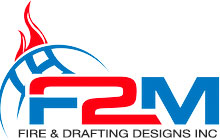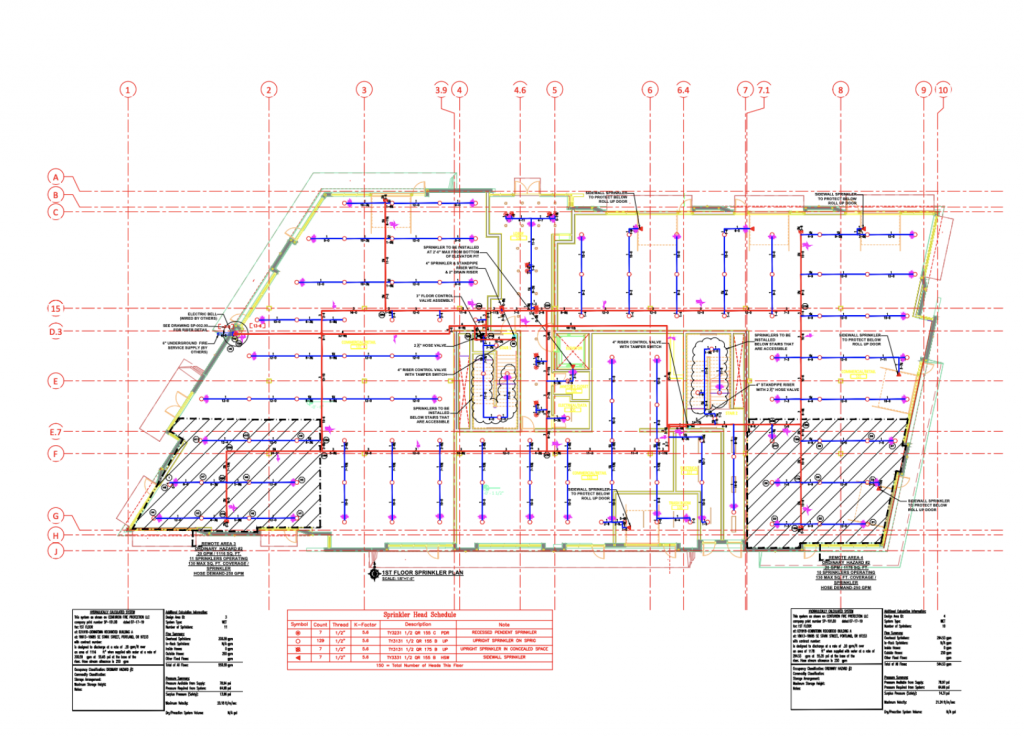The Best Fire Sprinkler System Design & Fire Protection System Design Services
From new construction projects to full-scale retrofitting, F2M brings 20 years of excellence to all phases of fire sprinkler system design. Complete your fire protection projects on time and on budget. F2M will be the partner you need while providing you with code-compliant, gold-standard quality fire sprinkler system designs & fire protection system design services.
* We Do Not Install Fire Sprinkler Systems *
Over 20 Years of Experience
Free Estimates
NICET Certified
Expedited Service
Insured MWBE Certified Firm
Serving Clients Across The USA
Fire Sprinkler "Engineers of Record"

Recent Projects
From new construction projects to full-scale retrofitting and renovations, F2M brings 20 years of excellence to all phases of fire sprinkler system design.
As a trusted partner to fire sprinkler contractors and engineers, including General Contractors and Architects, those who work with us also receive insightful fire protection consultations and project bid help.
Let's Get Your Project Started!
See Our Main Site at www.F2Mfadds.com
Blog Posts Are Below:
Emerging Trends in Fire Safety Technology and Their Implications for System Design
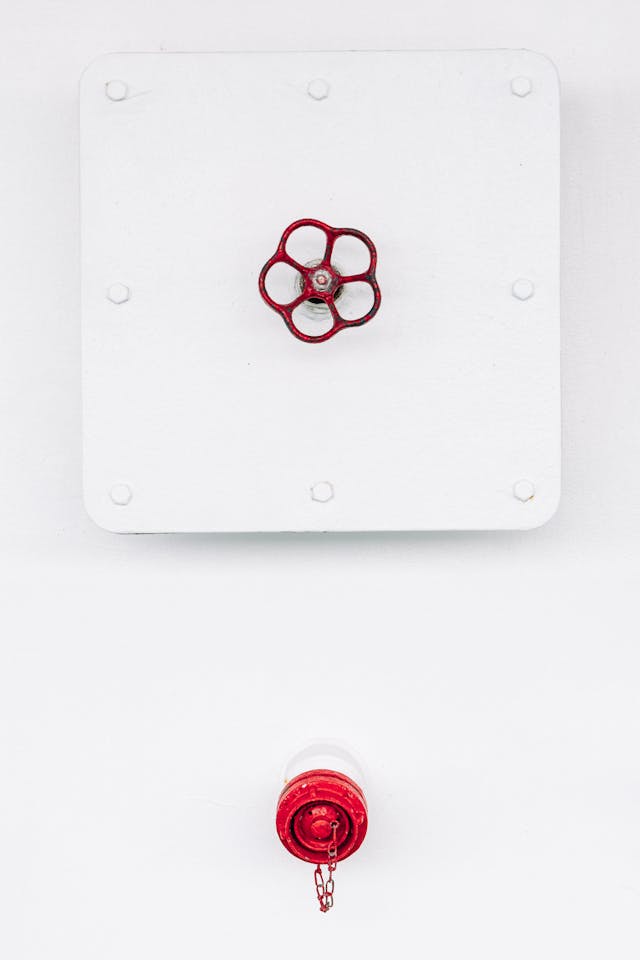 In this blog post, we will explore the latest trends in fire safety technology and discuss their implications for fire protection system design. Fire safety technology is continuously evolving, driven by advancements in science, engineering, and technology. These emerging trends are transforming how fire safety systems are designed, implemented, and managed.
In this blog post, we will explore the latest trends in fire safety technology and discuss their implications for fire protection system design. Fire safety technology is continuously evolving, driven by advancements in science, engineering, and technology. These emerging trends are transforming how fire safety systems are designed, implemented, and managed.
Emerging Trends in Fire Safety Technology
Advanced Detection Systems
Smart Sensors
Smart sensors are revolutionizing fire detection by providing more accurate and timely alerts. Key features include:- Ability to detect a range of fire indicators, including heat, smoke, and gases.
- Integration with building management systems for real-time monitoring and alerts.
- Reduction in false alarms, leading to more reliable fire response.
Multi-Criteria Detectors
Multi-criteria detectors combine multiple sensors to improve detection accuracy. Benefits include:- Enhanced ability to distinguish between actual fires and non-threatening conditions.
- Improved response times by providing more detailed information about the fire.
- Integration with other building systems for a coordinated response.
Enhanced Suppression Technologies
Water Mist Systems
Water mist systems use fine droplets of water to suppress fires effectively. Advantages include:- Efficient use of water, reducing water damage and consumption.
- Enhanced cooling effect, making them suitable for a variety of fire types.
- Safe for use around electrical equipment and sensitive areas.
Hybrid Fire Suppression Systems
Hybrid systems combine different suppression agents to provide comprehensive fire protection. Features include:- Combining water mist with inert gases or foam for enhanced effectiveness.
- Tailored solutions for specific fire risks, such as data centers and industrial facilities.
- Improved adaptability to changing fire scenarios.
Integration with Smart Building Technology
IoT-Enabled Fire Safety Systems
The Internet of Things (IoT) is transforming fire safety by enabling interconnected devices and systems. Key benefits include:- Real-time data collection and analysis for improved decision-making.
- Automated responses to fire incidents, such as shutting down HVAC systems and unlocking emergency exits.
- Remote monitoring and control of fire safety systems.
Building Management System Integration
Integrating fire safety systems with building management systems enhances overall safety and efficiency. Features include:- Centralized control and monitoring of all building systems.
- Coordinated response to fire incidents, improving occupant safety.
- Energy efficiency improvements by optimizing system operations.
Eco-Friendly Fire Protection Solutions
Sustainable Materials
Using sustainable materials in fire protection systems helps reduce the environmental impact. Key considerations include:- Choosing materials with a lower carbon footprint and longer lifespan.
- Utilizing recycled or recyclable components.
- Ensuring that materials do not release harmful substances during a fire.
Water and Energy Efficiency
Advancements in fire protection technology are focused on improving water and energy efficiency. Benefits include:- Low-flow sprinkler heads that use less water while maintaining effectiveness.
- Energy-efficient fire pumps and control systems.
- Water recycling systems that reduce overall water consumption.
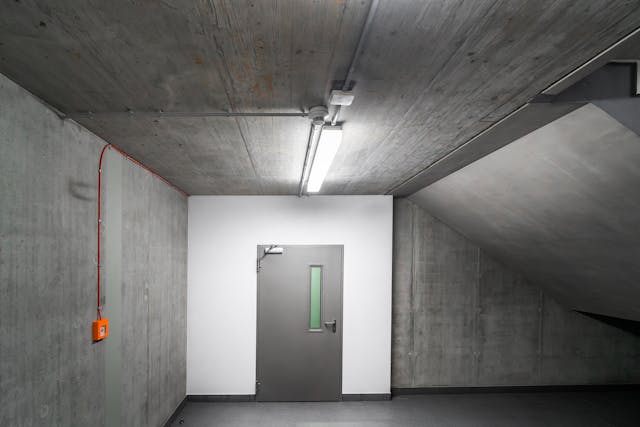
Implications for System Design
Customizable Solutions
The emergence of new technologies allows for more customizable fire protection solutions. Designers can now tailor systems to meet the specific needs of different environments. Benefits include:- Enhanced protection for unique fire risks in various industries.
- Flexibility in system design to accommodate building-specific requirements.
- Improved scalability and adaptability to future changes.
Enhanced Reliability and Maintenance
Modern fire protection systems are designed with reliability and ease of maintenance in mind. Key advantages include:- Reduced maintenance costs and downtime through advanced diagnostics and remote monitoring.
- Improved system reliability, ensuring optimal performance during emergencies.
- Proactive maintenance strategies enabled by real-time data and analytics.
Trends in Fire Safety Technology: Conclusion
The latest trends in fire safety technology are significantly enhancing the capabilities and effectiveness of fire protection systems. By embracing advanced detection systems, enhanced suppression technologies, integration with smart building technology, and eco-friendly solutions, fire protection system design is evolving to meet the demands of modern buildings and environments. At F2M Fire & Drafting Designs Inc., we are at the forefront of these technological advancements, offering cutting-edge fire protection solutions tailored to your specific needs. Contact us today to learn how we can help you implement the latest fire safety technologies in your building. F2M Fire & Drafting Designs Inc.718-0928-3009
info@f2mfadds.com
Stay ahead of the curve with our expert fire protection system design and implementation services.
Fire Sprinkler Design & Maintenance Newsletter February 2025
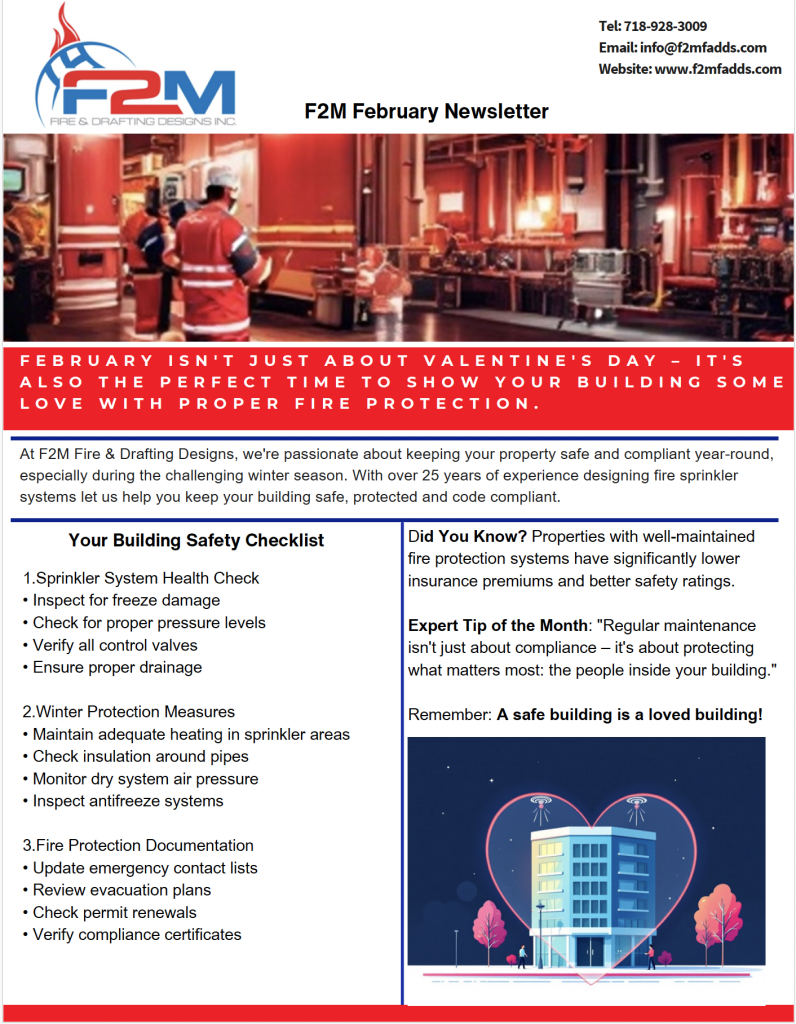
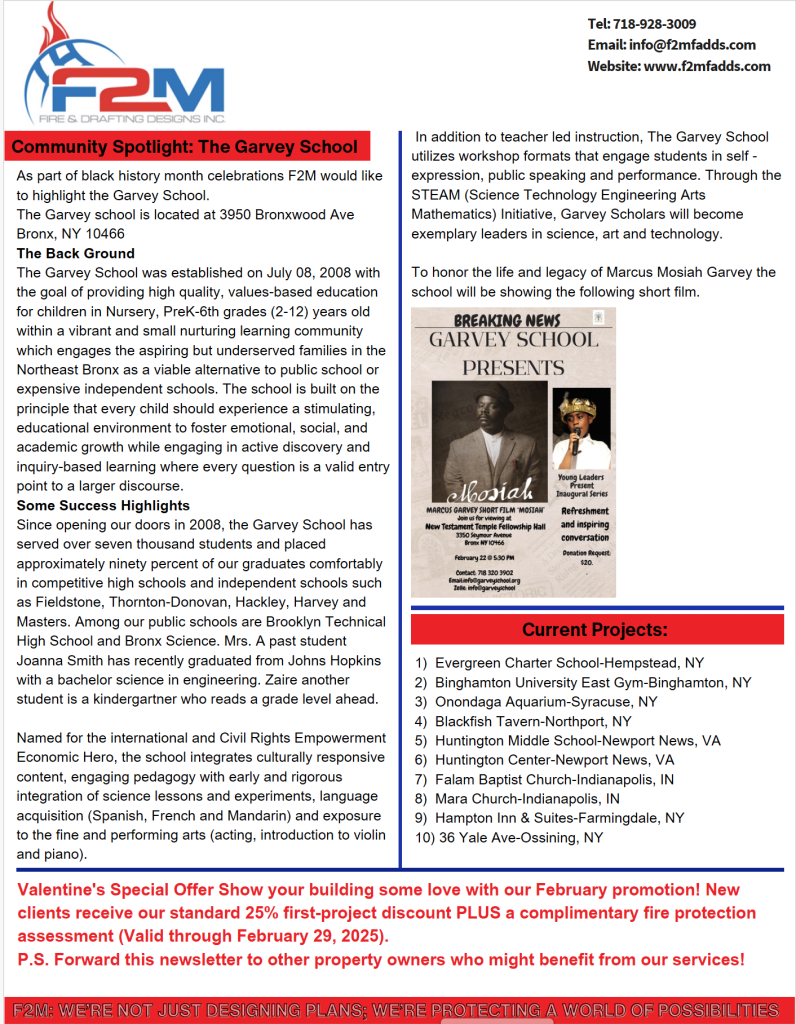
Download the PDF: F2M Fire Drafting Design February 2025 Newsletter
F2M Fire & Drafting Designs Inc.
31 South Street, Suite 3S-4
Mount Vernon, NY 10550
✆ (718) 928-3009
Email: info@f2mfadds.com
The Importance of Regular Fire Drills and Evacuation Planning
Regular fire drills and thorough evacuation planning are essential components of a comprehensive fire safety strategy. Ensuring the safety of occupants during a fire emergency requires more than just having fire suppression systems in place. In this blog post, we will discuss the importance of conducting regular fire drills and having a well-thought-out evacuation plan to ensure the safety of everyone in your building.
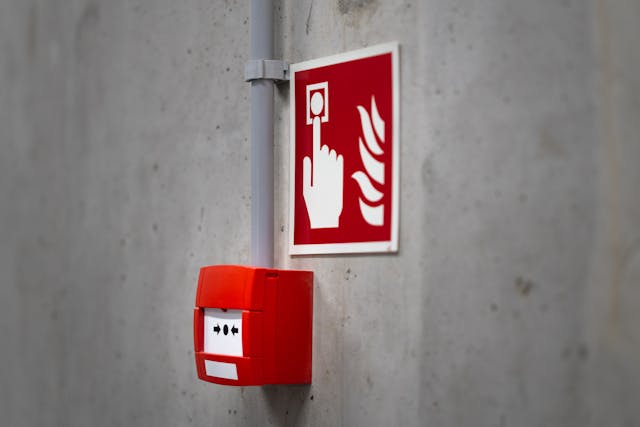
Benefits of Regular Fire Drills
Familiarization with Evacuation Routes
Regular fire drills help occupants become familiar with the designated evacuation routes and exits. Benefits include:
- Reducing confusion and panic during an actual fire emergency.
- Ensuring everyone knows the safest and quickest way to exit the building.
- Identifying any obstacles or issues with the evacuation routes.
Improving Response Times
Practicing fire drills helps improve the speed and efficiency of evacuations. Key advantages include:
- Reducing the time it takes for occupants to evacuate the building safely.
- Ensuring that everyone, including those with mobility challenges, can exit promptly.
- Allowing emergency response teams to refine their procedures and response times.
Testing Emergency Systems
Fire drills provide an opportunity to test and evaluate the functionality of emergency systems. Important aspects include:
- Ensuring that fire alarms and notification systems work correctly.
- Checking that emergency lighting and exit signs are operational.
- Verifying that fire doors and other safety features function as intended.
Key Elements of an Effective Evacuation Plan
Clear Evacuation Routes
A well-designed evacuation plan includes clearly marked evacuation routes. Key considerations include:
- Ensuring that routes are free of obstructions and easily accessible.
- Providing clear signage to guide occupants to the nearest exits.
- Designating primary and secondary evacuation routes in case of blockages.
Assembly Points
Designating safe assembly points outside the building is crucial for accounting for all occupants. Important factors include:
- Choosing assembly points that are a safe distance from the building.
- Ensuring that assembly points are easily accessible and not obstructed.
- Providing clear instructions on where occupants should go once they exit the building.
Roles and Responsibilities
An effective evacuation plan assigns specific roles and responsibilities to ensure an organized evacuation. Key roles include:
- Evacuation Coordinators: Individuals responsible for overseeing the evacuation and ensuring that all occupants are accounted for.
- Floor Wardens: Designated personnel on each floor to guide occupants to the exits and assist with evacuations.
- First Aid Responders: Trained individuals who can provide first aid to injured occupants.
Training and Education
Employee Training
Training employees on fire safety and evacuation procedures is essential for ensuring a safe and efficient response during an emergency. Training should cover:
- Recognizing the sound of the fire alarm and understanding its significance.
- Knowing the designated evacuation routes and assembly points.
- Understanding their roles and responsibilities during an evacuation.
Regular Fire Drills
Conducting regular fire drills reinforces the training and helps occupants become comfortable with the evacuation process. Best practices include:
- Scheduling fire drills at regular intervals to maintain preparedness.
- Evaluating the effectiveness of each drill and making necessary improvements.
- Incorporating feedback from employees to enhance the evacuation plan.
Compliance with Regulations
Meeting Safety Standards
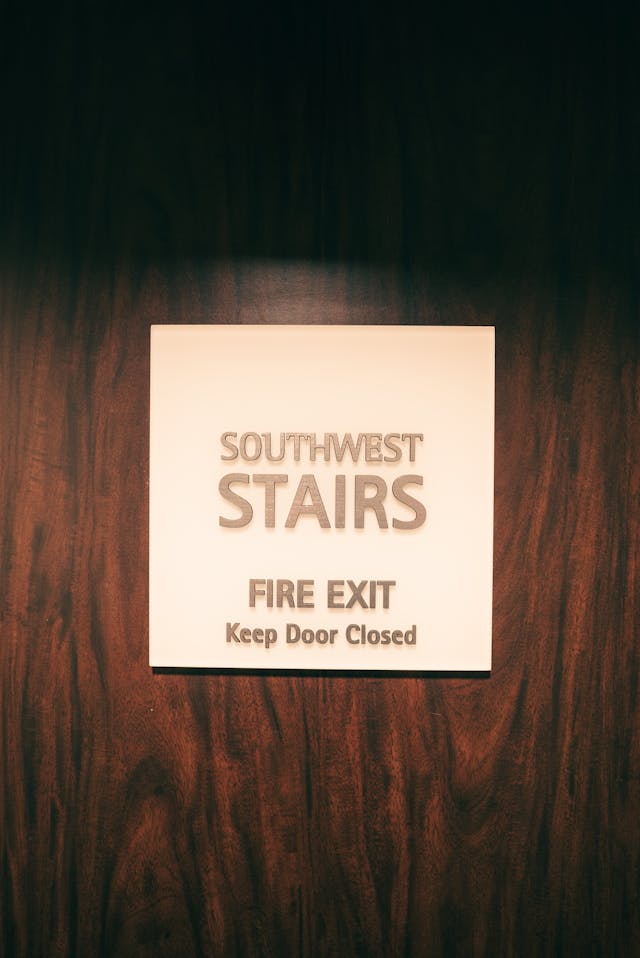 Regular fire drills and evacuation planning are often required by local fire safety codes and regulations. Compliance ensures:
Regular fire drills and evacuation planning are often required by local fire safety codes and regulations. Compliance ensures:
- Meeting legal requirements and avoiding fines or penalties.
- Ensuring that the building is prepared for a fire emergency.
- Providing peace of mind to occupants and building owners.
Documentation and Record Keeping
Maintaining records of fire drills and evacuation plans is essential for demonstrating compliance. Key steps include:
- Documenting the details of each fire drill, including the date, time, and any issues identified.
- Keeping records of employee training and education sessions.
- Ensuring that all documentation is easily accessible for regulatory inspections.
Fire Drills and Evacuation Planning: Conclusion
Regular fire drills and thorough evacuation planning are critical components of a comprehensive fire safety strategy. By ensuring that occupants are familiar with evacuation routes, improving response times, testing emergency systems, and complying with regulations, you can enhance the overall safety of your building.
At F2M Fire & Drafting Designs Inc., we specialize in helping businesses develop design fire sprinkler and emergency systems. Contact us today to schedule a consultation and ensure your building is prepared for any fire emergency.
F2M Fire & Drafting Designs Inc.
31 South Street, Suite 3S-4
Mount Vernon, NY 10550
718-928-3009
info@f2mfadds.com
Inspections for Fire Sprinkler Systems in New York: Make Sure Your System is Up To Code
This blog post will guide you through the steps to prepare for inspections of fire sprinkler systems in New York. Fire inspections are crucial for ensuring that your fire sprinkler system is up to code and capable of protecting lives and property in the event of a fire. In New York, compliance with fire safety regulations is mandatory, and failing to meet these standards can result in fines, legal liabilities, and increased risk of fire-related incidents.
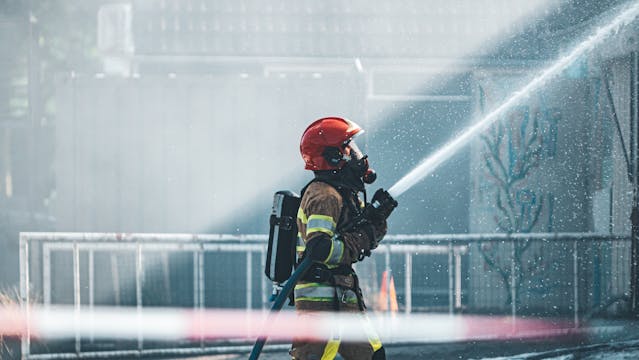
Fire Inspections for Fire Sprinkler Systems in New York: Understanding New York Fire Codes
New York City Fire Code
The New York City Fire Code sets forth the fire safety requirements for buildings and properties within the city. Key elements include:
- Specific requirements for the design, installation, and maintenance of fire sprinkler systems.
- Regular inspection and testing protocols to ensure system functionality.
- Compliance with the latest National Fire Protection Association (NFPA) standards.
New York State Fire Code
Outside of New York City, the New York State Fire Code provides guidelines for fire safety. Key points include:
- Adoption of NFPA standards for fire sprinkler system design and maintenance.
- Regular inspections and testing to ensure compliance with state regulations.
- Specific requirements for different types of properties, such as residential, commercial, and industrial buildings.
Preparing for a Fire Inspection
Regular Maintenance and Inspections
Routine maintenance and inspections are essential to ensure your fire sprinkler system is always ready for a fire inspection. Best practices include:
- Conducting monthly visual inspections to check for any visible damage or obstructions to sprinkler heads and piping.
- Performing quarterly system checks, including testing alarm valves, pressure gauges, and control valves.
- Scheduling annual professional inspections and testing of the entire system by certified professionals.
Testing the System
Regular testing ensures that your fire sprinkler system will function correctly during an emergency. Key tests include:
- Flow Testing: Verifying that the water pressure and flow rate are adequate for effective fire suppression.
- Alarm Testing: Ensuring that the fire alarm system activates correctly when the sprinkler system is triggered.
- Functional Testing: Checking the operation of control valves, switches, and other system components.
Documentation and Record Keeping
Maintaining Records
Detailed records of all inspections, tests, and maintenance activities are crucial for compliance and future reference. Key steps include:
- Documenting all inspections and maintenance activities, including the date, findings, and actions taken.
- Maintaining records of any repairs or replacements performed on the system.
- Ensuring that records are easily accessible for regulatory inspections and audits.
Compliance with Regulations
Ensure that your documentation complies with local and state regulations. This includes keeping records for a specified period and providing them to fire inspectors upon request.
Training and Preparedness
Employee Training
Training employees on fire safety practices is essential for ensuring a swift and effective response during an emergency. Training should cover:
- Proper use of fire extinguishers and other fire-fighting equipment.
- Evacuation procedures and emergency exits.
- Recognizing and reporting potential fire hazards.
Conducting Fire Drills
Regular fire drills help familiarize employees with evacuation procedures and ensure they can respond quickly in an emergency. Best practices include:
- Scheduling fire drills at regular intervals to maintain preparedness.
- Evaluating the effectiveness of each drill and making necessary improvements.
- Incorporating feedback from employees to enhance fire safety measures.
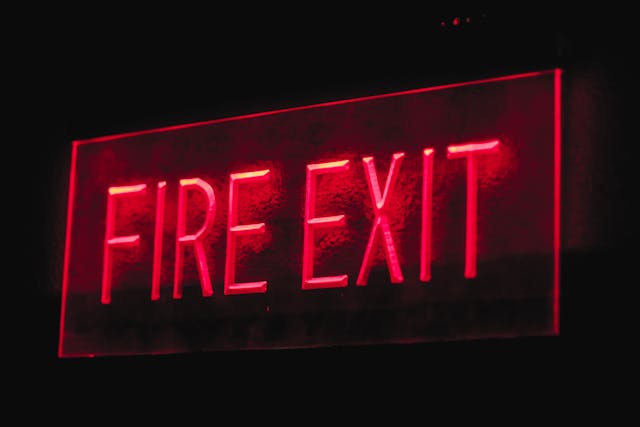
Working with Fire Safety Professionals
Hiring Certified Inspectors
Certified fire safety professionals have the expertise to conduct thorough inspections and ensure compliance with all relevant codes. Benefits include:
- Identifying and addressing potential issues before they become significant problems.
- Ensuring that all system components are in proper working condition.
- Providing detailed reports and recommendations for improvements.
Partnering with Fire Protection Companies
Partnering with a reputable fire protection company can help ensure that your fire sprinkler system remains compliant and functional. Services include:
- Regular maintenance and inspections by experienced professionals.
- Expert guidance on compliance with local and state fire codes.
- Access to advanced fire protection technology and solutions.
Fire Inspections for Fire Sprinkler Systems in New York: Conclusion
Preparing for fire inspections in New York requires a thorough understanding of local and state fire codes, regular maintenance and testing, proper documentation, and employee training. By following these steps and working with certified professionals, you can ensure that your fire sprinkler system remains up to code and provides reliable protection for your property and occupants.
At F2M Fire & Drafting Designs Inc., we specialize in helping businesses prepare for fire inspections and maintain compliant fire sprinkler systems. Contact us today to schedule an inspection or learn more about our maintenance programs.
F2M Fire & Drafting Designs Inc.
31 South Street, Suite 3S-4
Mount Vernon, NY 10550
718-928-3009
Email: info@f2mfadds.com
Ensure your fire sprinkler system is up to code with our expert services and support.
Fire Sprinkler System Design for High-Risk Environments: Key Considerations
Fire sprinkler systems design for high-risk environments requires careful planning and specialized knowledge. These environments, which include industrial facilities, chemical plants, and data centers, present unique challenges that demand robust and reliable fire protection solutions. In this blog post, we will explore the key considerations for designing fire sprinkler systems in high-risk environments.
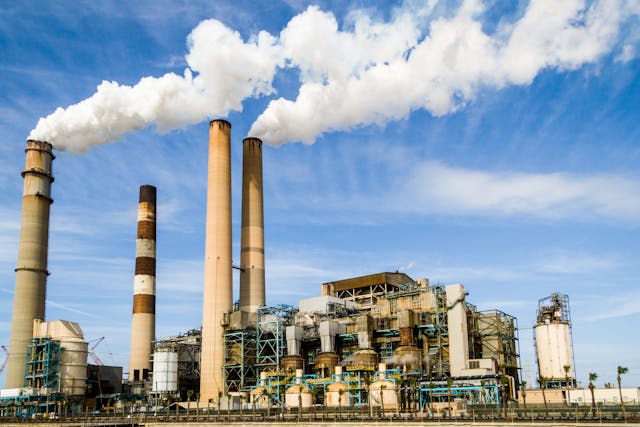
Understanding the Unique Risks
Identify Fire Hazards
The first step in designing an effective fire sprinkler system is to identify the specific fire hazards present in the environment. Consider:
- The types of materials and substances that could ignite, such as flammable liquids, chemicals, or electronic equipment.
- The processes and activities that could potentially cause a fire.
- The historical data on fire incidents within similar environments.
Assess Fire Load
Understanding the fire load, or the amount of combustible material present, is crucial for selecting the appropriate fire suppression system. High fire loads require systems that can deliver sufficient water or suppression agents to control or extinguish fires effectively.
Choosing the Right Fire Suppression System
Water-Based Systems
Water-based fire sprinkler systems are a common choice for many high-risk environments due to their reliability and effectiveness. Key options include:
- Wet Pipe Systems: Ideal for environments where freezing is not a concern, providing quick response to fires.
- Dry Pipe Systems: Suitable for areas prone to freezing, with pipes filled with pressurized air until activated.
- Deluge Systems: Designed for high-hazard areas, providing rapid and extensive water coverage when activated.
Foam-Based Systems
Foam-based fire suppression systems are effective for environments with flammable liquids and chemicals. Options include:
- Foam Sprinkler Systems: Combines water with foam concentrate to create a foam blanket that smothers the fire and prevents re-ignition.
- High-Expansion Foam Systems: Generates large volumes of foam to fill an entire room or area, ideal for enclosed spaces.
Gas-Based Systems
Gas-based fire suppression systems are suitable for environments with sensitive equipment and electronics. Options include:
- Inert Gas Systems: Uses gases like nitrogen and argon to displace oxygen and suppress fires without damaging equipment.
- Chemical Gas Systems: Uses agents like FM-200 or Novec 1230 to extinguish fires quickly and safely.
System Design and Layout
Customizing the Design
High-risk environments often require customized fire sprinkler system designs to address specific risks. Considerations include:
- Coverage: Ensuring all areas of the environment are adequately covered by the sprinkler system.
- Spacing: Proper spacing of sprinkler heads to ensure uniform water or agent distribution.
- Accessibility: Ensuring that sprinkler system components are accessible for maintenance and inspection.
Hydraulic Calculations
Accurate hydraulic calculations are essential to ensure the fire sprinkler system can deliver the required flow and pressure to control or extinguish a fire. Key factors include:
- Determining the required water or agent flow rate for the specific fire risk.
- Calculating pressure losses in the piping system to ensure adequate pressure at the sprinkler heads.
Compliance with Regulations
Meeting Safety Codes
Compliance with local, state, and national fire safety codes is critical for the design and installation of fire sprinkler systems in high-risk environments. Key standards include:
- National Fire Protection Association (NFPA) standards, such as NFPA 13 for sprinkler systems and NFPA 16 for foam systems.
- Local building and fire codes specific to the environment and industry.
Regular Inspections and Maintenance
High-risk environments require regular inspections and maintenance to ensure the fire sprinkler system remains operational. Best practices include:
- Monthly visual inspections of system components.
- Quarterly checks of alarm systems and control valves.
- Annual professional inspections and testing of the entire system.
Fire Sprinkler System Design for High-Risk Environments: Conclusion
Designing fire sprinkler systems for high-risk environments requires a thorough understanding of the unique risks, careful selection of the appropriate suppression system, and meticulous planning of the system layout. By considering these key factors, you can ensure that your fire sprinkler system provides reliable and effective protection for your high-risk environment.
At F2M Fire & Drafting Designs Inc., we specialize in designing and installing fire sprinkler systems for high-risk environments. Contact us today to discuss your specific fire protection needs and find the best solution for your facility.
F2M Fire & Drafting Designs Inc.
31 South Street, Suite 3S-4
Mount Vernon, NY 10550
(718) 928-3009
Email: info@f2mfadds.com
https://www.f2mfadds.com/contact
Let our experts help you design a fire sprinkler system that provides robust and reliable protection for your high-risk environment.
Understanding the Different Types of Fire Suppression Systems
Fire suppression systems are critical for protecting lives, property, and assets from the devastating effects of fire. Various types of fire suppression systems are designed to address different fire risks and environments. In this blog post, we will explore the different types of fire suppression systems and their specific applications.
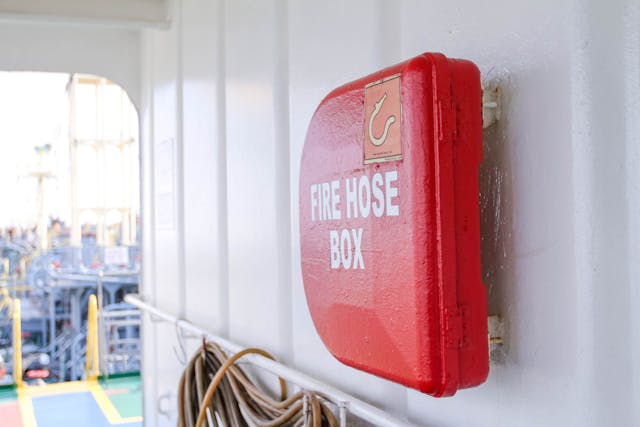
Water-Based Fire Suppression Systems
Sprinkler Systems
Sprinkler systems are the most common type of fire suppression system and are widely used in residential, commercial, and industrial settings. Key features include:
- Automatic activation in response to heat, ensuring quick response to fires.
- Various designs, including wet pipe, dry pipe, and pre-action systems, to suit different environments.
- Effective for controlling and extinguishing a wide range of fires.
Deluge Systems
Deluge systems are similar to sprinkler systems but are designed for high-hazard areas. Features include:
- All sprinkler heads are open and connected to a water supply through a valve that opens when a fire is detected.
- Provides rapid and extensive water coverage, ideal for industrial facilities and chemical storage areas.
Water Mist Systems
Water mist systems use fine water droplets to suppress fires. Advantages include:
- Efficient use of water, reducing water damage and consumption.
- Effective for protecting sensitive equipment and areas where water damage must be minimized.
Foam-Based Fire Suppression Systems
Foam Sprinkler Systems
Foam sprinkler systems are designed to combat fires involving flammable liquids. Key features include:
- Combining water with foam concentrate to create a foam blanket that smothers the fire and prevents re-ignition.
- Ideal for fuel storage facilities, aircraft hangars, and chemical plants.
High-Expansion Foam Systems
High-expansion foam systems generate large volumes of foam to fill an entire room or area. Benefits include:
- Effective for large, enclosed spaces such as warehouses and ship holds.
- Provides rapid fire suppression and cooling.
Gas-Based Fire Suppression Systems
Inert Gas Systems
Inert gas systems use gases like nitrogen, argon, and carbon dioxide to suppress fires by displacing oxygen. Features include:
- Safe for use in occupied spaces as they do not produce harmful byproducts.
- Effective for protecting valuable assets in data centers, server rooms, and archives.
Chemical Gas Systems
Chemical gas systems use agents like FM-200, Novec 1230, and Halon alternatives to extinguish fires. Advantages include:
- Rapid fire suppression without damaging sensitive equipment.
- Suitable for applications where water or foam cannot be used.
Powder-Based Fire Suppression Systems
Dry Chemical Systems
Dry chemical systems use powdered chemicals to extinguish fires. Key features include:
- Effective for a wide range of fire types, including Class A, B, and C fires.
- Commonly used in industrial settings, commercial kitchens, and automotive applications.
Specialized Powder Systems
Specialized powder systems are designed for specific fire risks, such as metal fires (Class D). Benefits include:
- Targeted fire suppression for unique hazards.
- Provides effective fire control for high-risk environments.
Hybrid Fire Suppression Systems
Water and Gas Systems
Hybrid systems combine the benefits of water and gas suppression. Features include:
- Using both water mist and inert gas to achieve rapid and effective fire suppression.
- Ideal for areas with a mix of fire risks, such as data centers and industrial facilities.
Dual-Agent Systems
Dual-agent systems use both foam and dry chemical agents. Advantages include:
- Comprehensive fire suppression for complex fire scenarios.
- Enhanced effectiveness for high-hazard environments.
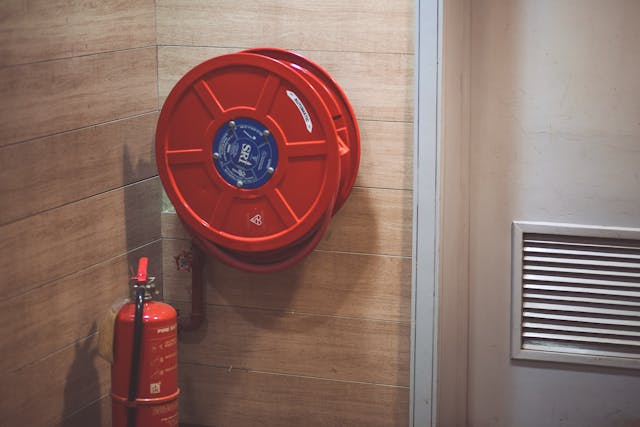
Types of Fire Suppression Systems: Conclusion
Understanding the different types of fire suppression systems is crucial for selecting the right solution for your specific fire protection needs. Each system offers unique benefits and is designed to address specific fire risks and environments.
At F2M Fire & Drafting Designs Inc., we specialize in designing and installing a wide range of fire suppression systems tailored to your needs. Contact us today to discuss your fire protection requirements and find the best solution for your business.
F2M Fire & Drafting Designs Inc.
31 South Street, Suite 3S-4
Mount Vernon, NY 10550
718-928-3009
info@f2mfadds.com
Let our experts help you choose the right fire suppression system to protect your property and ensure safety.
The Role of Fire Sprinkler Systems in Sustainable Building Design
Fire sprinkler systems, traditionally seen purely as safety mechanisms, are now being integrated into sustainable building practices. In this blog post, we explore the role of fire sprinkler systems in sustainable building design and how they contribute to green building goals.
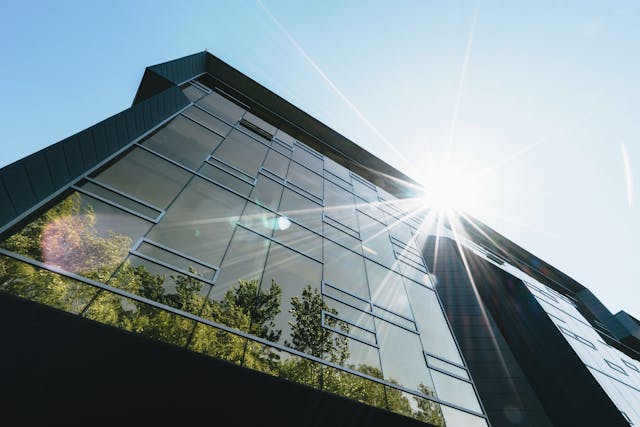
Water Efficiency
Low-Flow Sprinkler Heads
Modern fire sprinkler systems incorporate low-flow sprinkler heads that use water more efficiently. Benefits include:
- Reducing the amount of water used during fire suppression.
- Minimizing water damage to the building and contents.
- Lowering the environmental impact associated with water use.
Water Recycling Systems
Some fire sprinkler systems are designed to recycle water used during tests and fire events. Advantages of water recycling include:
- Conserving water resources by reusing water.
- Reducing the strain on local water supplies.
- Lowering costs associated with water usage.
Material Selection and Durability
Sustainable Materials
Using sustainable materials in fire sprinkler systems contributes to overall building sustainability. Examples include:
- Opting for pipes made from recycled or low-impact materials.
- Choosing corrosion-resistant materials that extend system life and reduce maintenance needs.
- Selecting components that have a lower environmental footprint.
Longevity and Durability
Durable fire sprinkler systems require fewer replacements and repairs, which reduces waste and resource consumption. Benefits include:
- Extending the life of the fire protection system.
- Minimizing the environmental impact of manufacturing and installing new components.
- Reducing the frequency of system overhauls.
Energy Efficiency
Integrated Building Management Systems
Fire sprinkler systems that integrate with smart building management systems can enhance energy efficiency. Features include:
- Automated control of HVAC systems to reduce energy use during fire events.
- Real-time monitoring and diagnostics to optimize system performance.
- Coordinated responses to fire alarms that minimize disruption and energy waste.
Efficient Design and Installation
Efficiently designed and installed fire sprinkler systems contribute to overall building energy efficiency by:
- Reducing the energy required for system maintenance and operation.
- Optimizing water distribution to prevent unnecessary water and energy use.
- Minimizing the need for additional cooling or heating during fire events.
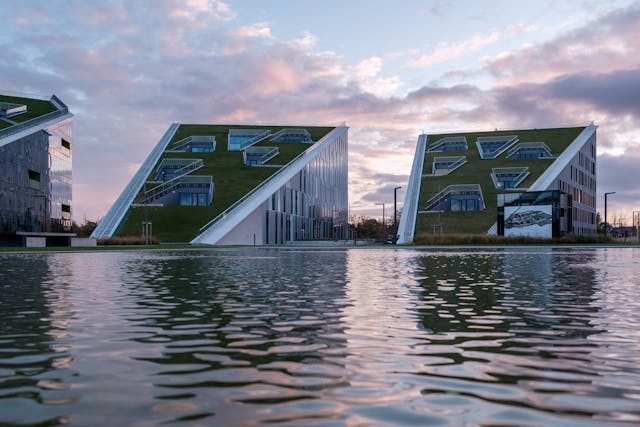
Compliance with Green Building Standards
LEED Certification
Fire sprinkler systems can contribute to achieving Leadership in Energy and Environmental Design (LEED) certification by:
- Supporting water use reduction credits through efficient design.
- Contributing to indoor environmental quality by minimizing smoke and pollutants during a fire.
- Enhancing overall building safety and sustainability.
Other Green Building Certifications
Fire sprinkler systems also play a role in other green building certification programs, such as:
- Building Research Establishment Environmental Assessment Method (BREEAM).
- Green Building Initiative’s Green Globes.
- International WELL Building Institute (IWBI) standards.
Fire Sprinkler Systems in Sustainable Building Design: Conclusion
Integrating fire sprinkler systems into sustainable building design enhances both safety and environmental responsibility. By focusing on water efficiency, sustainable materials, energy efficiency, and compliance with green building standards, fire sprinkler systems play a vital role in the creation of sustainable, resilient buildings.
At F2M Fire & Drafting Designs Inc., we specialize in designing fire sprinkler systems that align with sustainable building practices. Contact us today to learn how we can help you achieve your green building goals while ensuring the highest standards of fire safety.
F2M Fire & Drafting Designs Inc.
31 South Street, Suite 3S-4
Mount Vernon, NY 10550
718-928-3009
Email: info@f2mfadds.com
Partner with us to integrate efficient and sustainable fire protection solutions into your building design.
Cost-Effective Fire Protection Solutions for Small Businesses
A robust fire protection solution is a critical aspect of business safety, regardless of the size of the enterprise. For small businesses, finding cost-effective fire protection solutions that don’t compromise on safety is essential. In this blog post, we’ll explore practical and budget-friendly fire protection strategies tailored to small businesses.
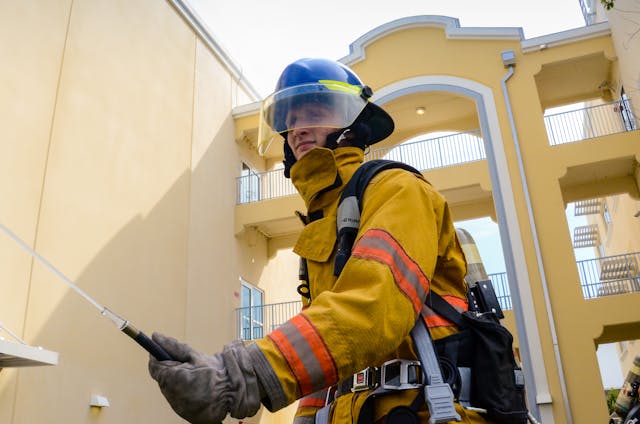
Assessing Fire Risks
Identify Potential Hazards
The first step in creating an effective fire protection plan is to identify potential fire hazards specific to your business. Consider:
- The types of materials and equipment present.
- Processes and activities that could lead to a fire.
- Historical data on fire incidents in similar businesses.
Evaluate Fire Load
Understanding the fire load, or the amount of combustible material present, helps in selecting appropriate fire protection measures.
Basic Fire Protection Measures
Smoke Detectors and Alarms
Smoke detectors and alarms are fundamental components of any fire protection strategy. They provide early warning, allowing for timely evacuation and response. Best practices include:
- Installing smoke detectors in key areas such as offices, storage rooms, and near electrical equipment.
- Regularly testing and maintaining detectors to ensure they are functional.
- Considering interconnected smoke alarms for comprehensive coverage.
Fire Extinguishers
Fire extinguishers are a cost-effective way to combat small fires before they escalate. Ensure that:
- Extinguishers are appropriately rated for different types of fires (e.g., Class A, B, C).
- Employees are trained on how to use them effectively.
- Extinguishers are regularly inspected and maintained.
Sprinkler Systems
Choosing the Right System
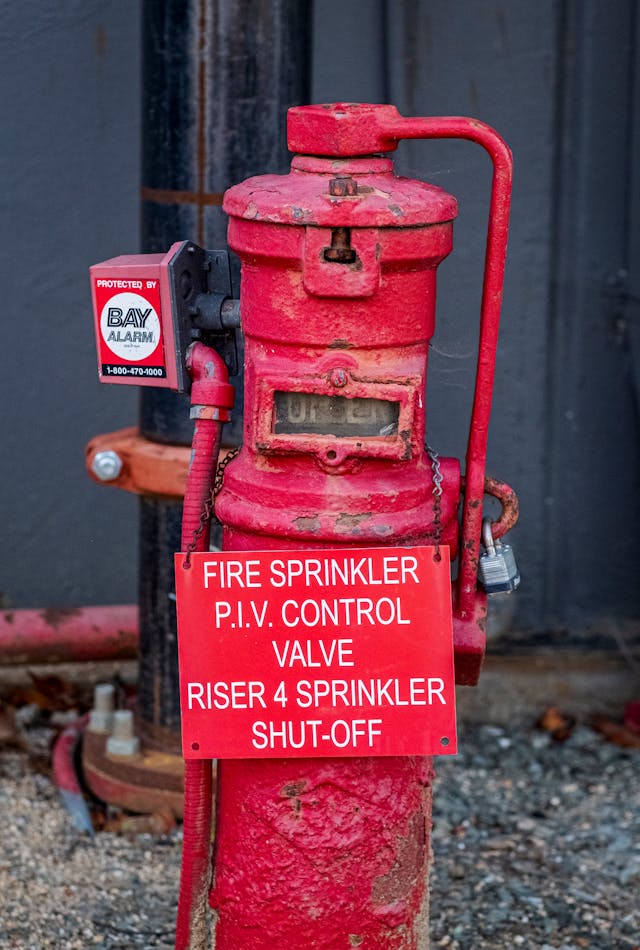 While sprinkler systems are a more significant investment, they provide reliable fire protection. For small businesses, consider:
While sprinkler systems are a more significant investment, they provide reliable fire protection. For small businesses, consider:
- Wet pipe systems for areas where freezing is not a concern.
- Dry pipe systems for environments where temperatures may drop below freezing.
- Pre-action systems for areas with sensitive equipment that require additional protection.
Cost-Effective Installation
To manage costs, work with experienced professionals to design and install a system that meets your specific needs without unnecessary expenses.
Regular Maintenance and Testing
Scheduled Inspections
Regular maintenance is crucial for ensuring that fire protection systems remain functional. Best practices include:
- Monthly visual inspections of fire extinguishers and smoke detectors.
- Quarterly checks of sprinkler systems and alarm systems.
- Annual professional inspections and testing of all fire protection systems.
Documentation
Maintain detailed records of all inspections, maintenance activities, and any issues identified. This helps in compliance with regulations and can be useful for insurance purposes.
Employee Training and Preparedness
Fire Safety Training
Training employees on fire safety practices is a cost-effective way to enhance your fire protection strategy. Training should cover:
- Proper use of fire extinguishers.
- Evacuation procedures and emergency exits.
- Recognizing and reporting potential fire hazards.
Regular Fire Drills
Conducting regular fire drills ensures that employees are familiar with evacuation procedures and can respond quickly in an emergency.
Leveraging Technology
Smart Fire Protection Systems
Investing in smart fire protection systems can be cost-effective in the long run. These systems offer:
- Real-time monitoring and alerts.
- Automated responses to fire incidents.
- Remote access and control, allowing for efficient management.
Integration with Building Management Systems
Integrating fire protection systems with building management systems can streamline operations and enhance overall safety.
Fire Protection Solutions for Small Businesses: Conclusion
Cost-effective fire protection solutions are essential for small businesses to ensure the safety of employees and property. By assessing fire risks, implementing basic protection measures, investing in appropriate sprinkler systems, and maintaining regular inspections and training, small businesses can achieve robust fire protection without breaking the bank.
At F2M Fire & Drafting Designs Inc., we specialize in providing customized and cost-effective fire protection solutions for small businesses. Contact us today to discuss your specific fire safety needs and find the best solutions to protect your business.
Contact us:
F2M Fire & Drafting Designs Inc.
31 South Street, Suite 3S-4
Mount Vernon, NY 10550
✆ (718) 928-3009
Email: info@f2mfadds.com
Protect your small business with our expert fire protection services tailored to your budget and needs.
